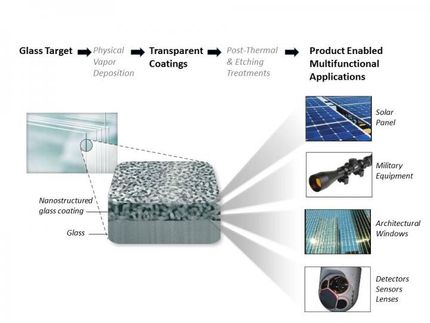Nanoparticles found in moon glass bubbles explain weird lunar soil behavior
Advertisement
A discovery by QUT soil scientist Marek Zbik of nano particles inside bubbles of glass in lunar soil could solve the mystery of why the moon's surface topsoil has many unusual properties. Dr Zbik, from Queensland University of Technology's Science and Engineering Faculty, said scientists had long observed the strange behaviour of lunar soil but had not taken much notice of the nano and submicron particles found in the soil and their source was unknown.
Dr Zbik took the lunar soil samples to Taiwan where he could study the glass bubbles without breaking them using a new technique for studying nano materials called synchrotron-based nano tomography to look at the particles. Nano tomography is a transmission X-ray microscope which enables 3D images of nano particles to be made.
"We were really surprised at what we found," Dr Zbik said. "Instead of gas or vapour inside the bubbles, which we would expect to find in such bubbles on Earth, the lunar glass bubbles were filled with a highly porous network of alien-looking glassy particles that span the bubbles' interior.
"It appears that the nano particles are formed inside bubbles of molten rocks when meteorites hit the lunar surface. Then they are released when the glass bubbles are pulverised by the consequent bombardment of meteorites on the moon's surface.
"This continuous pulverising of rocks on the lunar surface and constant mixing develop a type of soil which is unknown on Earth."
Dr Zbik said nano particles behaved according to the laws of quantum physics which were completely different from so called 'normal' physics' laws. Because of this, materials containing nano particles behave strangely according to our current understanding.
"We don't understand a lot about quantum physics yet but it could be that these nano particles, when liberated from their glass bubble, mix with the other soil constituents and give lunar soil its unusual properties.
Most read news
Other news from the department science

Get the chemical industry in your inbox
By submitting this form you agree that LUMITOS AG will send you the newsletter(s) selected above by email. Your data will not be passed on to third parties. Your data will be stored and processed in accordance with our data protection regulations. LUMITOS may contact you by email for the purpose of advertising or market and opinion surveys. You can revoke your consent at any time without giving reasons to LUMITOS AG, Ernst-Augustin-Str. 2, 12489 Berlin, Germany or by e-mail at revoke@lumitos.com with effect for the future. In addition, each email contains a link to unsubscribe from the corresponding newsletter.































































